
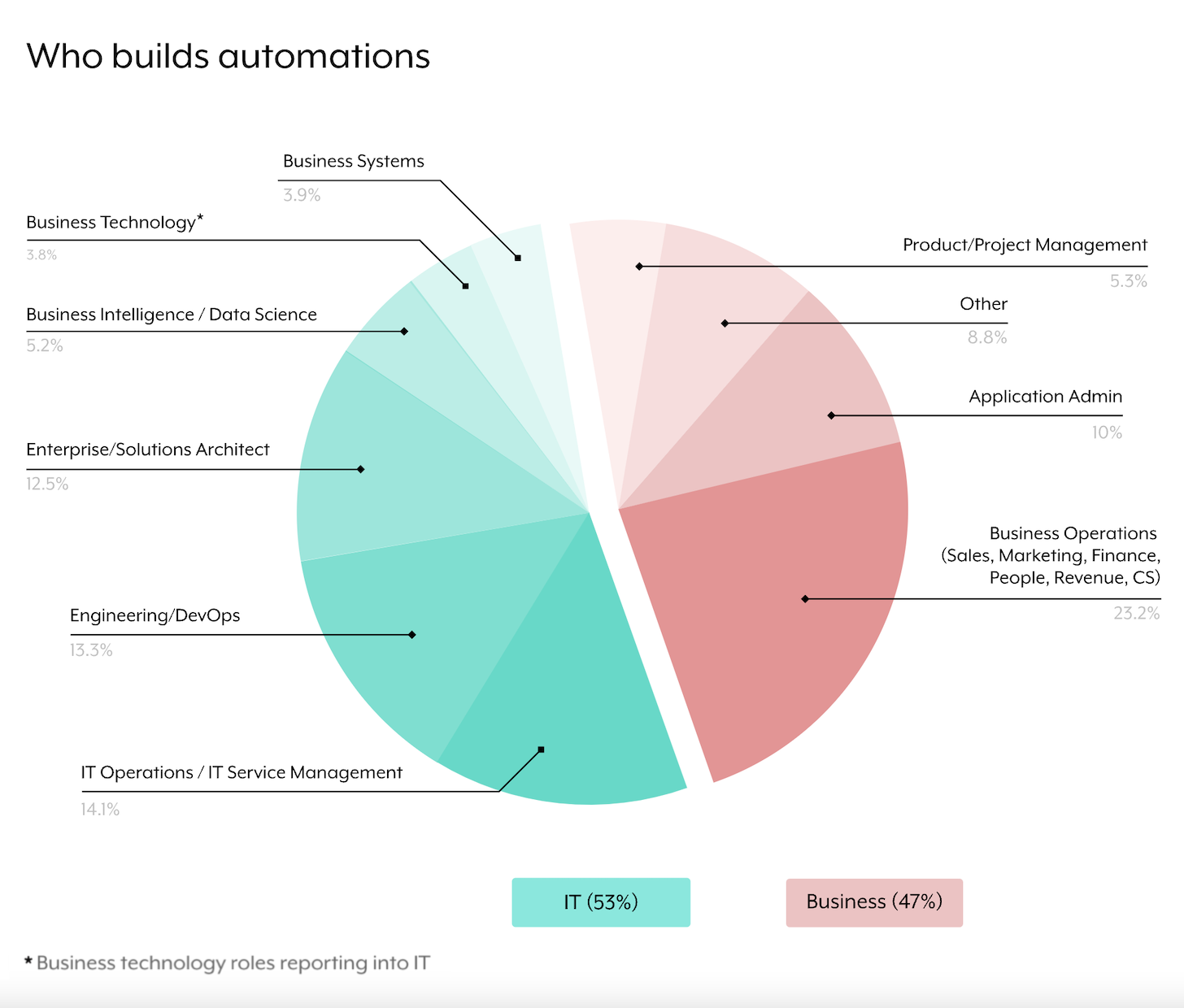
Apologies for the lull in posting. I took a extensive, significantly-wanted relatives family vacation — virtually solely electronic-cost-free. I’m now back again in the saddle, recharged and reenergized about all that’s occurring in martech. With a massive backlog of neat matters to share with you.
Here’s the first…
Enterprise automation company Workato (disclosure: I’m an advisor to them) lately released their 2022 Work Automation Index. It’s not a study, but fairly the aggregated knowledge from 900 of their midsize and company consumers from February 2021 to January 2022.
In other words, it’s the floor truth of the matter of what a quite substantial sample of businesses are basically automating. Difficult empirical details, not smooth biased thoughts.
The 1st discovering that leaped out to me is the chart at the best of this post. Practically 50 % (47%) of automations designed on their platform were being crafted by organization customers — not IT or engineering experts.
This is about as resounding of an endorsement of the adoption of “no code” and decentralized technology enablement as one could ask for — all the extra so since Workato’s customers are normally massive enterprises with robust IT departments, not scrappy, highly-fluid startups.
I like scrappy, very-fluid startups, which have been the main end users of most “no code” platforms. But they often have significantly a lot more flexibility in how they hustle than an recognized business. Some individuals have argued that this sort of no-code, decentralized empowerment of non-IT professionals would not operate in a much larger business with official IT governance. This facts from Workato very strongly rebuts that argument.
In fact, it’s the burgeoning group of non-IT “business operations” pros — marketing and advertising ops, revenue ops, earnings ops, CS ops, and so on. — who are collectively constructing the greatest number of automations (23.2%). Huge Ops is flourishing! This is in no small part because Huge Ops teams enable larger sized firms adapt with the kind of agility applied by scrappy, extremely-fluid startup rivals who are making an attempt to disrupt them.
This is not just a internet marketing ops thing either.
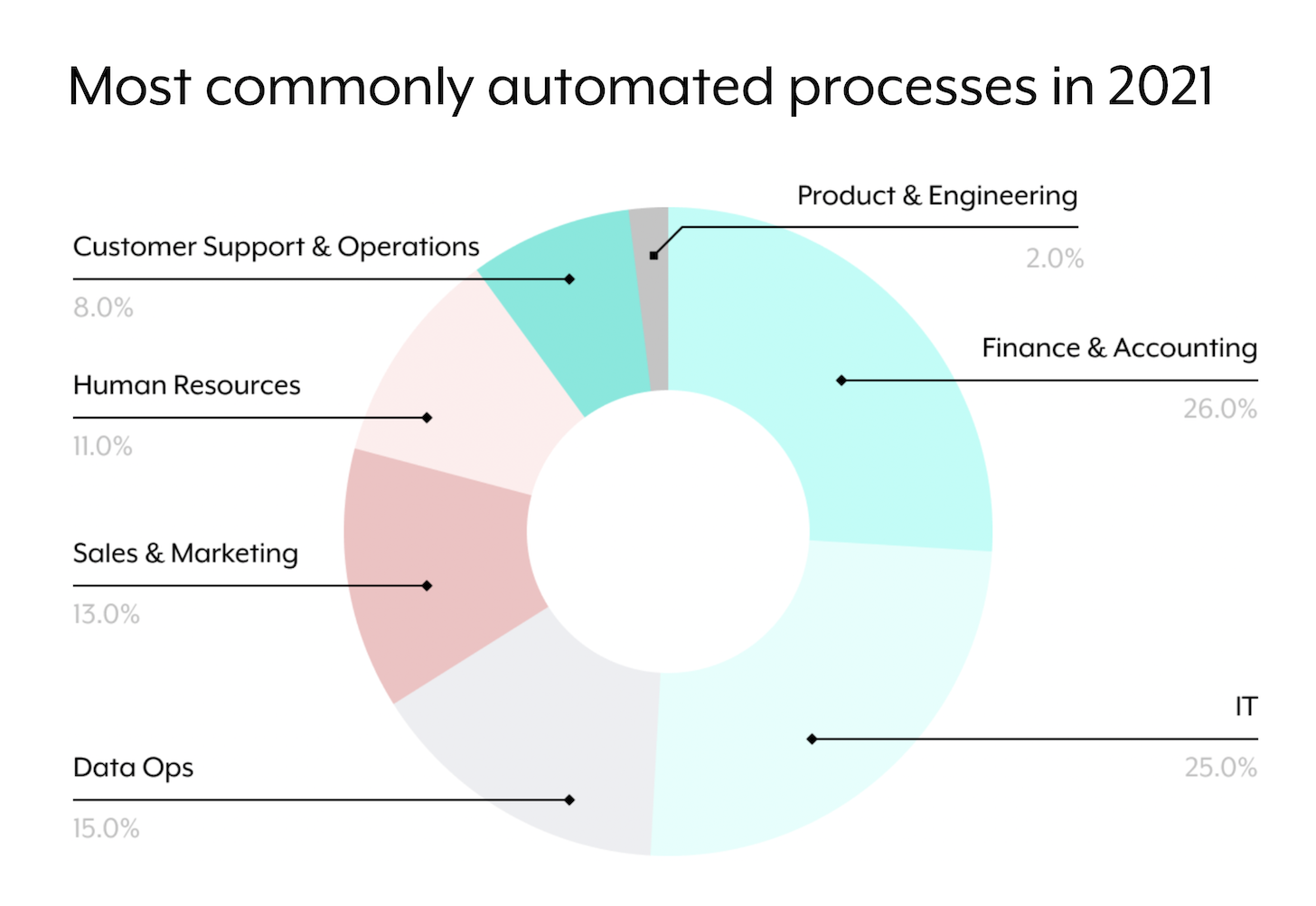
In fact, internet marketing and income rank 3rd in the departments leveraging automation. The largest amount of automatic procedures in this index have been for finance and accounting (26%). Gross sales and marketing and advertising had half as many (13%).
(Granted, this might be simply because Workato precisely has extra adoption inside of finance and accounting, as properly as IT. If you variable in all the automations that internet marketing ops and revenue ops use in their CRMs and MAPs, they almost certainly have extra overall automations. But the issue is that this proliferation of business automation is not exceptional to advertising and income.)
So what are advertising ops execs automating? In this article are the superior-level clusters:
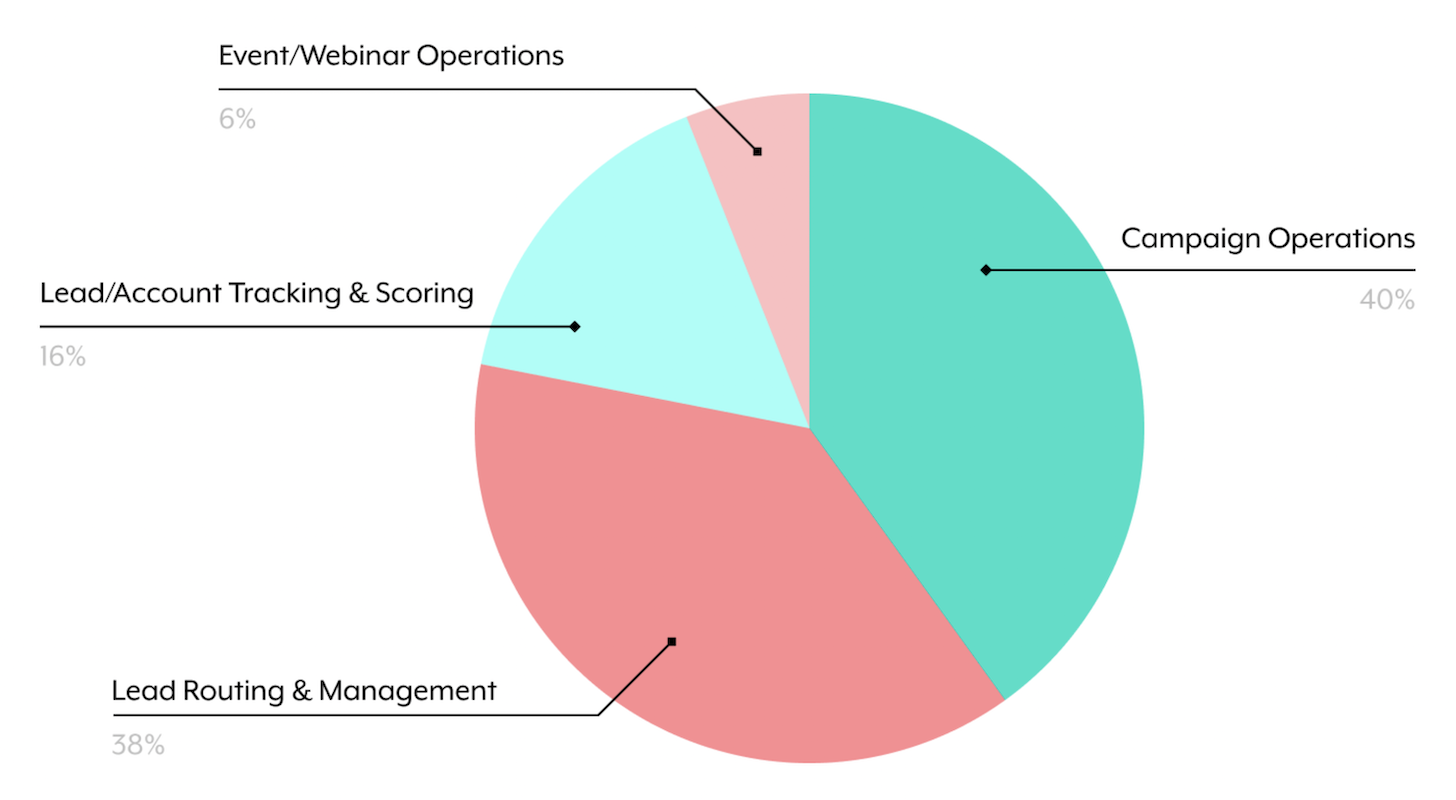
If campaign functions seems a very little much too obscure, Workato explains what’s involved:
“Everything in a marketing campaign not relevant to leads, like creative & duplicate approvals, file storage, and capturing performance info. It might signify connecting CRM devices, advertising and marketing applications, and task management tools, making it possible for teams to plan, execute, and measure the impact of strategies. Automating campaign execution processes assists creative sources stay away from info entry and campaign leaders get rid of manual methods from reporting.”
Curious about marketing and advertising ops’ cousins in gross sales ops and what they are automating?
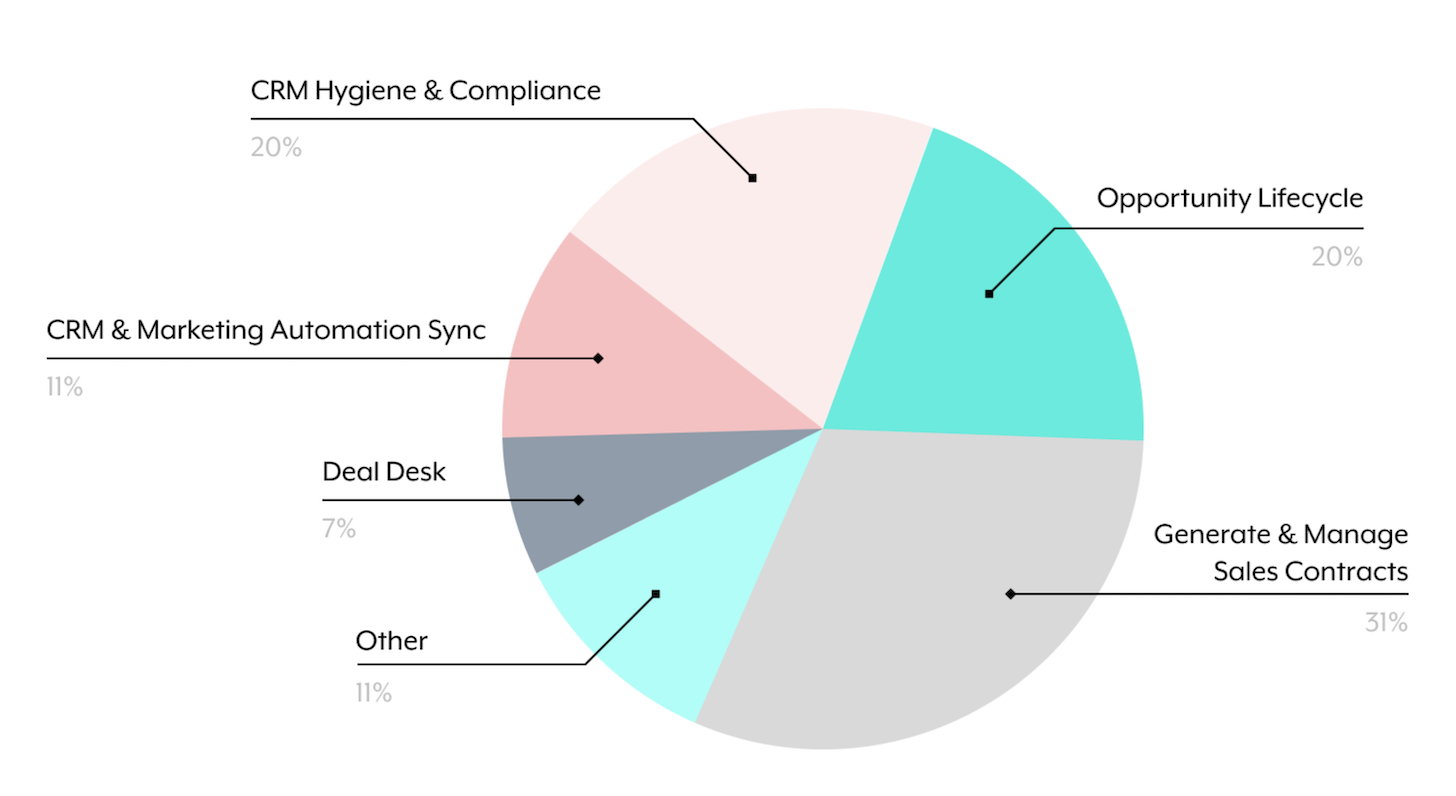
(I suspect that in a ton of companies, many of these “sales” automations are getting operate — or at least co-managed — by the marketing and advertising ops team. Or, in those companies who have a mixed revenue ops functionality, these neatly mix together below that umbrella.)
To shut comprehensive circle, here’s 1 much more interesting stat from this report:
Even though across the entire business 47% of automations were being designed by small business users (instead of IT), inside of marketing and advertising and product sales that proportion jumped to 70%.
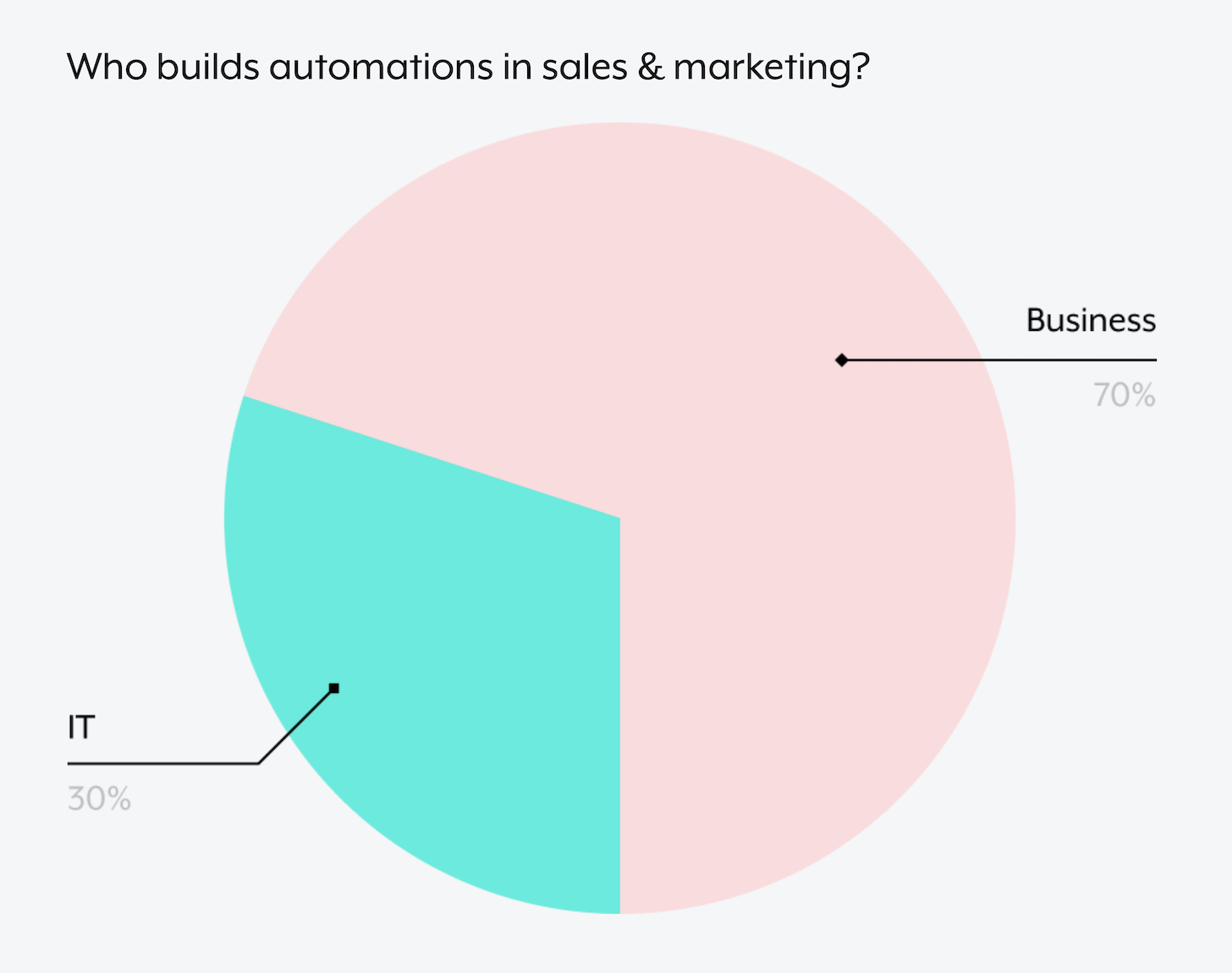
That is a single of the maximum ratios of organization-consumer builders to IT builders of any office — with the exception of shopper success, where by 72% of the automations are crafted by organization consumers: hand-offs from income to purchaser achievement, shopper onboarding and training workflows, automatic shopper experience and NPS surveys, etcetera.
Internet marketing, sales, buyer service: all groups where the processes becoming automated revolve all-around the shopper journey and count greatly on the domain experience of ops leaders embedded inside people departments.
This is Big Ops incarnate.






